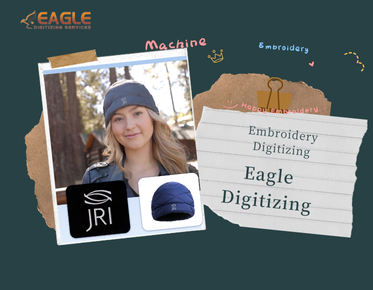Best Image Types for Digitizing and Spotting Resolution Differences
In the world of embroidery digitizing, selecting the right type of image is crucial for achieving high-quality results. Whether you're converting an image to a PES file or creating a custom embroidery design, understanding the nuances of image resolution and type can make a significant difference. In this blog, we will explore the best types of images for digitizing and provide tips on how to quickly spot resolution differences.
Understanding Image Types for Digitizing
When it comes to digitizing images for embroidery, not all image types are created equal. The most commonly used image formats include JPEG, PNG, and TIFF. Each of these formats has its own strengths and weaknesses, which can affect the quality of the final embroidered product.
JPEG Images
JPEG is a widely used format due to its balance between quality and file size. However, JPEG images are compressed, which can lead to a loss of detail. This makes them less ideal for intricate embroidery designs that require high precision.
PNG Images
PNG images are often preferred for digitizing because they support lossless compression. This means that the image retains its quality even after compression, making it suitable for detailed designs. Additionally, PNG supports transparency, which can be beneficial for certain design elements.
TIFF Images
TIFF is another excellent choice for digitizing, especially for professional projects. TIFF images are uncompressed, preserving every detail of the original image. This makes them ideal for high-quality embroidery designs, though the file sizes can be significantly larger.
Spotting Resolution Differences Quickly
Being able to spot resolution differences in images is a valuable skill, especially when working with embroidery digitizing. Here are some quick tips to help you assess image resolution in just a few seconds:
Check the Image Dimensions
One of the fastest ways to determine an image's resolution is by checking its dimensions. Higher resolution images will have larger dimensions, which translates to more detail in the embroidery design.
Zoom In on the Image
Zooming in on an image can quickly reveal its resolution quality. If the image becomes pixelated or blurry when zoomed in, it likely has a lower resolution. High-resolution images will maintain clarity even when magnified.
Use Image Editing Software
Software like Adobe Photoshop or GIMP can provide detailed information about an image's resolution. These tools can show you the DPI (dots per inch), which is a key indicator of resolution quality.
Choosing the Right Image for Your Project
When selecting an image for digitizing, consider the complexity of your design and the capabilities of your embroidery machine. For simple designs, a high-quality JPEG might suffice. However, for more intricate designs, a PNG or TIFF image will likely yield better results.
Additionally, it's important to consider the final size of the embroidered product. Larger designs will require higher resolution images to ensure that all details are captured accurately.
Future Trends in Image Digitizing
As technology continues to advance, we can expect to see improvements in image digitizing software and hardware. Machine learning and AI are beginning to play a role in enhancing image quality and automating the digitizing process. These advancements will likely make it easier to achieve professional-quality results with less manual intervention.
For those looking to stay ahead of the curve, investing in the latest digitizing software and keeping up with industry trends will be essential. Whether you're a hobbyist or a professional, understanding the best practices for image digitizing will ensure that your embroidery projects are successful.
For those seeking professional assistance, Eagle Digitizing excels in providing professional embroidery digitizing services, ensuring every design is crafted with unmatched precision.


